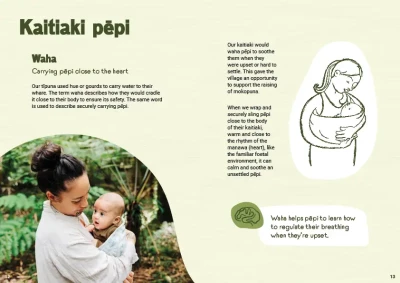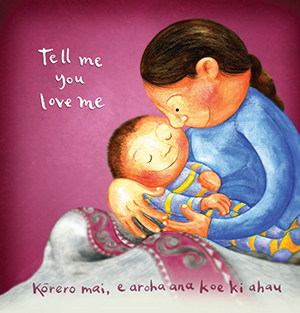
Waha
Waha is holding pēpi close and wrapping pēpi. Māori have used waha for generations. Keeping a baby physically close promotes a sense of security, ensures they’re safe and helps to develop the holder’s bond with pēpi.
Tīpuna Māori used hue (gourds) to carry water to their whare . The term waha describes how they would cradle it close to their body to ensure its safety. This same word is used to describe securely carrying pēpi.
Kaitiaki would waha pēpi to soothe them when they were upset or hard to settle. This gave the village an opportunity to support the raising of mokopuna.
When we wrap and securely sling pēpi close to the body of their kaitiaki, warm and close to the rhythm of the manawa (heart), like the familiar foetal environment, it can calm and soothe an unsettled pēpi. Waha helps pēpi to learn how to regulate their breathing when they’re upset.
Attachment and safety
Waha is an example of how what we do naturally with babies is so often exactly what they need for their wellbeing and healthy development. It is an example of how science has confirmed what whānau have been doing for thousands of years.
Gentle touch is how babies first know they’re loved. Physical closeness develops their sense of attachment, which is critical to healthy personal development. It teaches babies what they should expect from relationships with people they love, throughout life.
Being held in a parent’s arms is the safest place for pēpi to be. The parent can have peace of mind knowing pēpi is happy, content and relaxed. The fact that babies are ‘wired’ to stop crying when carried is a part of our evolutionary biology that helps our species survive.
Conversation ideas
Encouraging whānau to hold pēpi close.
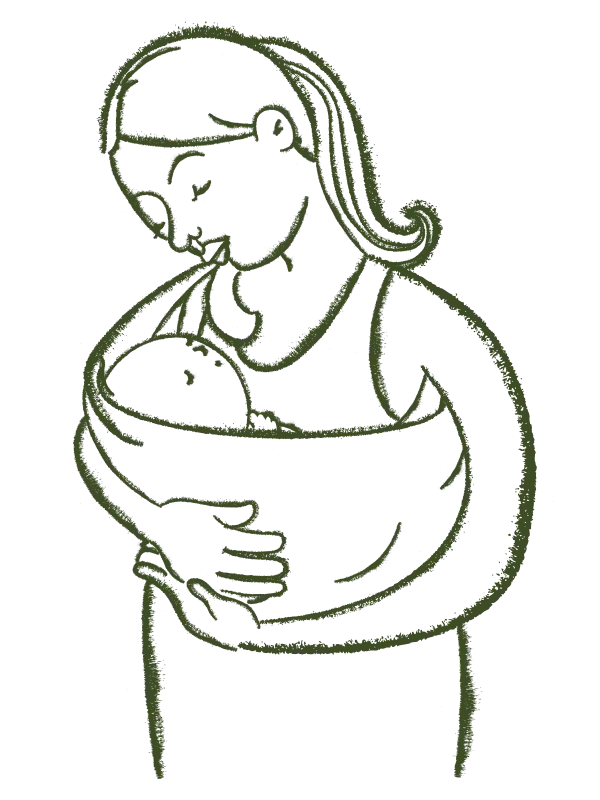
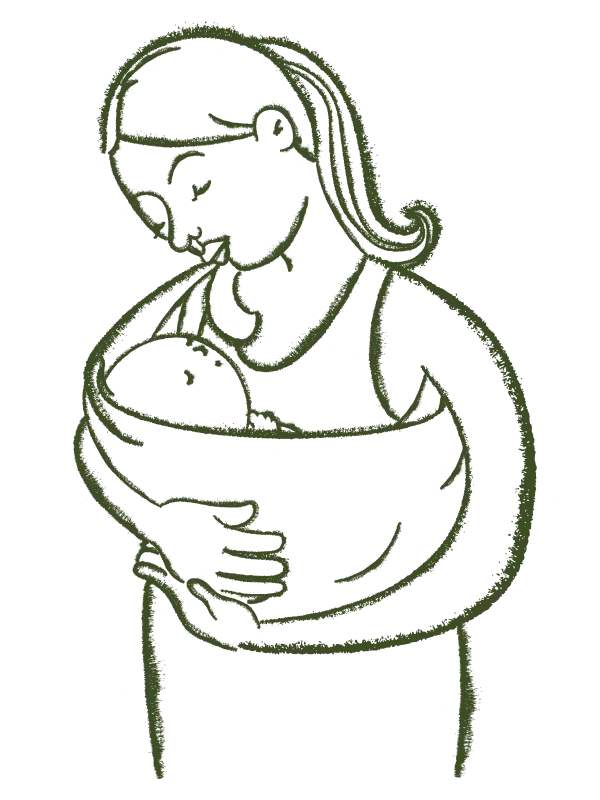
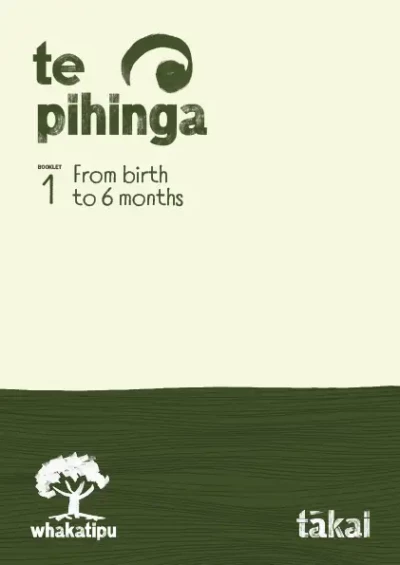 pdf 11 MB
pdf 11 MB
